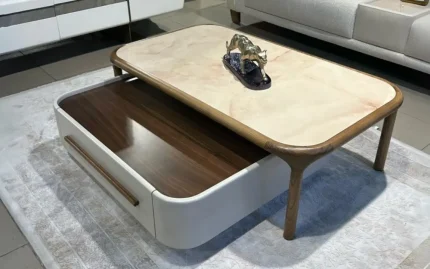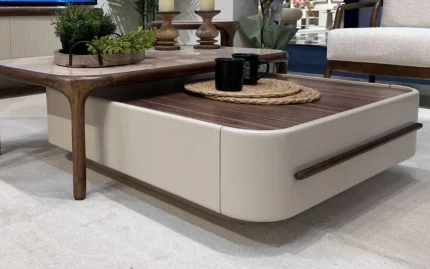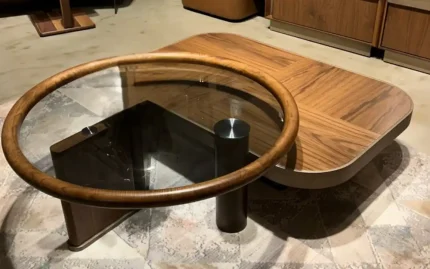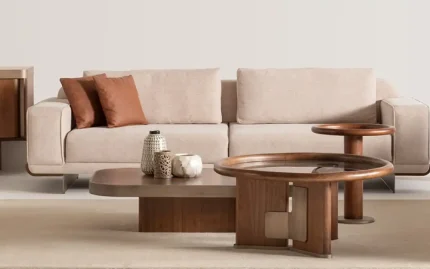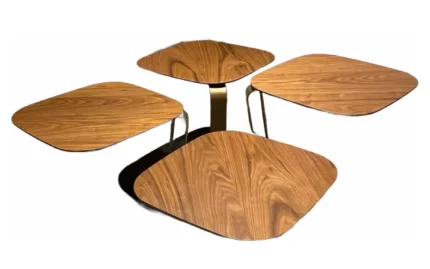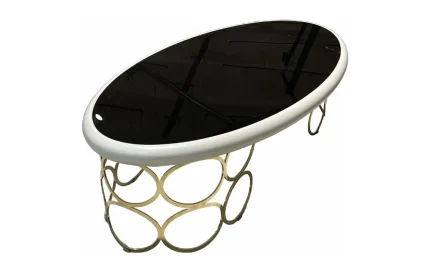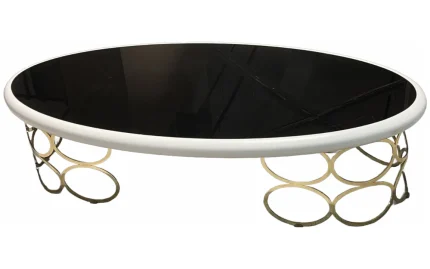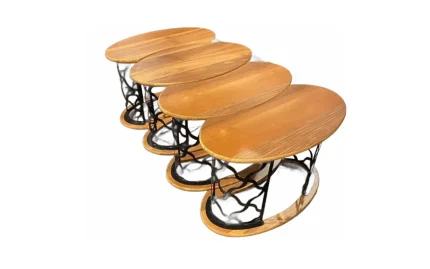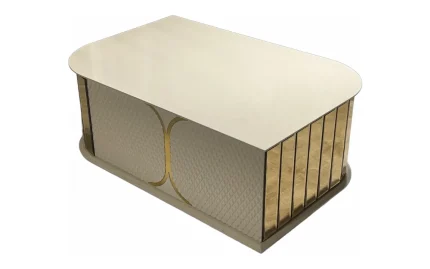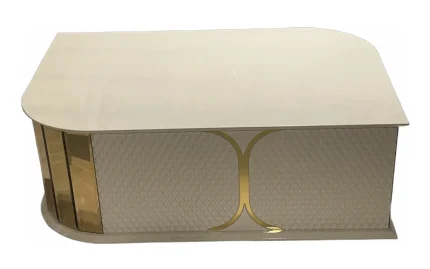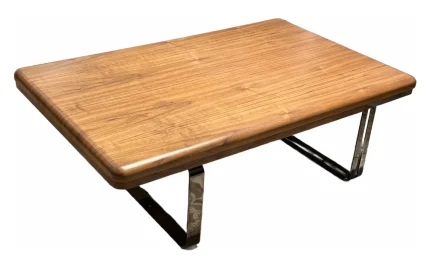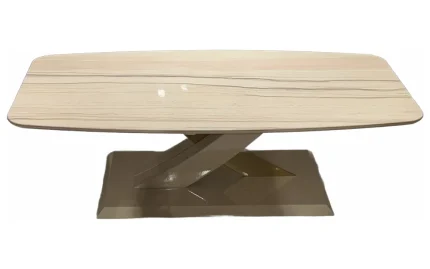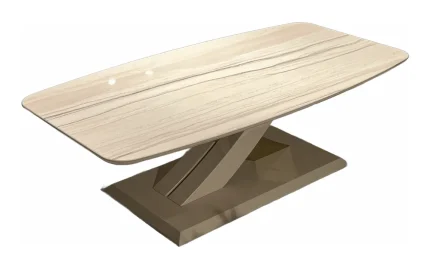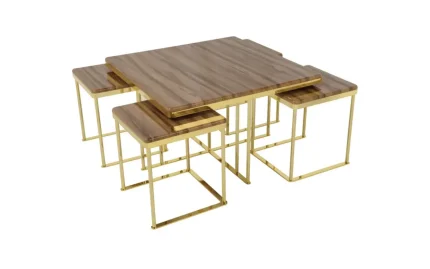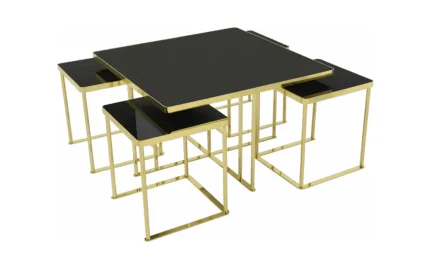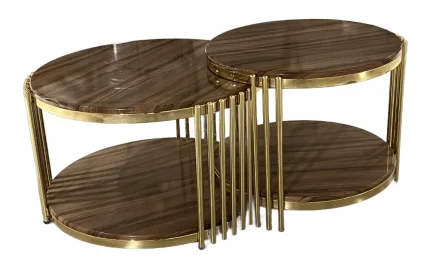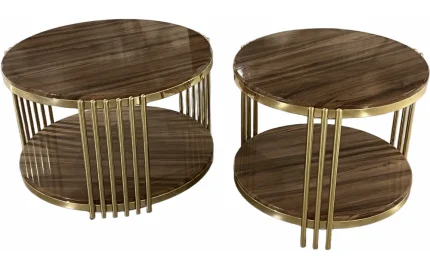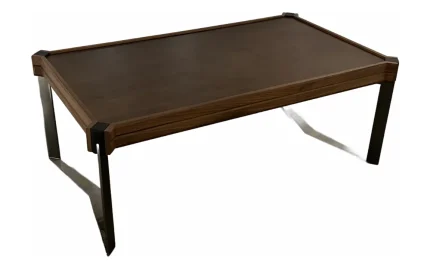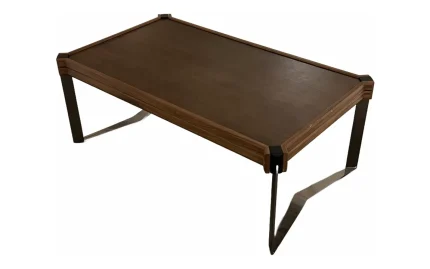Living Room and Center Tables
The living room stands as the heart of every home, serving as a hub for relaxation, entertainment, and cherished moments. A well-designed living area reflects your style, personality, and facilitates comfort for both family gatherings and personal leisure time.
The Essence of a Living Room:
A living room isn’t just a physical space; it's where memories are made, stories are shared, and relaxation reigns supreme. It’s a canvas to express your taste, incorporating elements that resonate with your lifestyle and preferences.
The Center Table’s Role:
At the heart of this sanctuary lies the center table, a focal point that unites the room. More than a functional piece, it's a design statement, adding flair and functionality to the space. It serves as a platform for books, decor, and, most importantly, a gathering spot for shared moments.
Design and Functionality:
Selecting the ideal center table is crucial. It should harmonize with the room's aesthetics, complementing the furniture, and allowing free movement. Whether sleek and modern, rustic and charming, or elegant and contemporary, the center table ties the room together.
Enhancing Aesthetics and Utility:
Beyond aesthetics, the center table should cater to functionality. Storage options, convertible designs, or multipurpose features offer added utility, making it a versatile addition to the living space.
Creating the Perfect Harmony:
Pairing the center table with the surrounding furniture—sofas, accent chairs, or even wall décor—creates a cohesive and inviting atmosphere. The balance between space and furniture enhances the room's functionality and visual appeal.
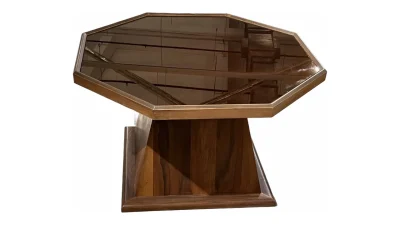
Bianca Hexagonel Center Table
Types of Center Tables
Center tables come in various styles and designs, each offering unique features and aesthetics. Here are some common types of center tables:
- Coffee Tables:
- Typically lower in height, perfect for placing in front of sofas or seating arrangements in the living room.
- Available in various shapes like rectangular, square, round, or oval.
- Nesting Tables:
- Consist of multiple tables that can be stacked or nested together when not in use, offering versatility in placement and storage.
- Adjustable Height Tables:
- Feature a mechanism that allows the table's height to be adjusted, offering flexibility for various uses, such as dining or working.
- Storage Coffee Tables:
- Include shelves, drawers, or compartments for storage, ideal for keeping magazines, remote controls, or other living room essentials organized.
- Trunk or Chest Tables:
- Resemble vintage trunks or chests, offering both a table surface and storage space within the trunk, suitable for a rustic or eclectic décor.
- Drum Tables:
- Circular tables with a drum-like shape, often featuring intricate designs or patterns on the surface.
- Glass Top Tables:
- Feature a glass surface, providing a modern and sleek look while allowing visibility to any area rugs or decor placed underneath.
- Marble or Stone Tables:
- Showcase a luxurious appearance with marble or stone tops, adding elegance and a sophisticated touch to the room.
- Rattan or Wicker Tables:
- Made from natural materials like rattan or wicker, offering a casual and relaxed vibe, perfect for coastal or bohemian-themed spaces.
- Convertible Tables:
- Offer versatility by transforming into different shapes or sizes, catering to various needs, such as dining or serving.
Each type of center table serves specific purposes and caters to different styles and functionalities. Selecting the right type depends on your preferences, room size, décor theme, and the intended use of the table within your living space.
Choosing the right Center Table
Selecting the right center table is essential as it serves as a focal point in your living area. Here are some key factors to consider when choosing one:
- Size and Proportion: Assess the available space in your living room. Ensure the table's size complements the area without overwhelming it. Leave enough room around the table for movement.
- Style and Aesthetics: Consider the overall décor theme. Whether you prefer modern, rustic, traditional, or eclectic styles, choose a center table that harmonizes with the existing furniture and complements the room's ambiance.
- Material and Durability: Opt for materials that suit your lifestyle. Wood, glass, metal, or a combination offer different looks and durability. Ensure the material is easy to maintain and fits your usage needs.
- Functionality: Evaluate your needs. If storage is essential, consider tables with shelves, drawers, or hidden compartments. Some tables offer lift-up tops for added utility or have wheels for mobility.
- Shape and Design: Rectangular, square, round, or oval tables each offer distinct aesthetics. Choose a shape that aligns with your room layout and complements the furniture arrangement.
- Height: The table's height should be proportional to the seating around it. Aim for a height that allows easy access and is comfortable for reaching items on the table.
- Versatility: Consider a table that serves multiple purposes. Some designs offer adjustable heights or can transform into a dining surface, providing versatility in usage.
- Budget: Set a budget range and explore options within that limit. There are varied price points for center tables, so prioritize quality and features based on your budget.
- Personal Preference: Ultimately, select a table that resonates with your personal taste. Whether you prefer a bold statement piece or a subtle, understated design, your center table should reflect your style.
By considering these factors, you can narrow down options and choose a center table that not only complements your living space aesthetically but also meets your practical needs.
Popular Center Table materials
Center tables come in various materials, each offering distinct aesthetics, durability, and maintenance requirements. Some popular materials include:
- Wood:
- Solid Wood: Known for its durability and classic appeal, it offers warmth and timeless elegance. Varieties like oak, teak, walnut, and mahogany are popular choices.
- Engineered Wood: MDF (Medium-Density Fiberboard) or plywood, often finished with veneers, offer a cost-effective alternative with good durability.
- Glass:
- Tempered Glass: Provides a sleek and modern look. It's durable, scratch-resistant, and easy to clean. Clear or frosted options are available.
- Smoked or Tinted Glass: Offers a sophisticated look and hides fingerprints and smudges better than clear glass.
- Metal:
- Steel or Stainless Steel: Adds a contemporary touch and durability. Often used in modern designs due to its sleek appearance.
- Brass or Copper: Provides an elegant and luxurious feel. Requires maintenance to prevent tarnishing.
- Marble or Stone:
- Marble: Known for its luxurious appearance and unique veining patterns. Requires sealing to prevent stains and etching.
- Granite or Quartz: Durable and available in various colors and patterns. Less prone to staining compared to marble.
- Acrylic or Lucite:
- Offers a modern and minimalist look. It's lightweight, easy to clean, and adds a sense of airiness to the space.
- Rattan or Wicker:
- Ideal for adding a natural and casual vibe. It's lightweight and often used in more relaxed, coastal, or bohemian settings.
- Reclaimed or Upcycled Materials:
- Repurposed wood, metals, or materials offer a unique, eco-friendly, and rustic appearance.
Each material has its own characteristics, and the choice often depends on personal preference, desired style, room décor, and maintenance considerations. Mixing materials can also create a unique and visually appealing center table design.
Caring for your Center Table
Caring for your center table ensures its longevity and preserves its aesthetic appeal. Here are some general tips:
- Regular Cleaning: Dust the table regularly with a soft, lint-free cloth to prevent accumulation. Use a slightly damp cloth for stubborn spots or spills, followed by a dry cloth to prevent water damage.
- Avoid Harsh Cleaners: Refrain from using harsh chemicals or abrasive cleaners that could damage the table's finish. Opt for mild soap and water for cleaning wood or glass surfaces.
- Protective Measures: Use coasters or placemats under glasses, cups, or hot items to prevent scratches, water rings, or heat damage. Felt pads under decorative items can prevent scratches.
- Avoid Direct Sunlight: Position the table away from direct sunlight to prevent fading or discoloration, especially for wood or upholstered tables.
- Maintenance Based on Material:
- Wood: Apply furniture polish or wax periodically to nourish the wood and maintain its luster. Avoid excessive moisture to prevent warping.
- Glass: Use a glass cleaner for streak-free cleaning. Wipe spills promptly to prevent stains.
- Metal: Use metal-specific cleaners to maintain shine and prevent tarnishing or rusting.
- Marble or Stone: Seal the surface periodically to prevent stains and etching. Clean spills promptly with a gentle cleaner.
- Regular Inspections: Check for loose screws, joints, or any signs of damage. Tighten loose parts to prevent further damage.
- Cover or Protect During Use: Use tablecloths or protective covers when using the table for activities that might scratch or damage the surface, such as crafting or playing board games.
- Seasonal Care: During seasonal changes or extreme humidity, monitor wood tables for any signs of warping or changes in shape. Maintain consistent humidity levels to prevent damage.
By adopting these care practices tailored to your center table's material, you can preserve its beauty and functionality for years to come, ensuring it remains a centerpiece of your living space.


